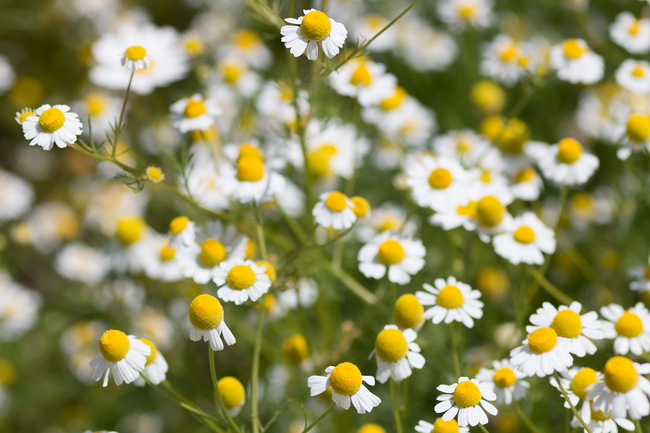- Make It Yourself Lavender Heart-Shaped Bath Bombs!
- 20 Things You Never Knew About “Down There”
- 12 Best Foods For Those Suffering From Arthritis Pain
- 12 Personal Hygiene Mistakes Almost Everyone Makes (Mom Never Told You About #4!)
- 15 Medicinal Plants And Herbs From The Cherokee People
- 12 Mind-Blowing Benefits Of Drinking Coconut Water During Pregnancy
- 12 Outstanding Winter Foods That Won’t Fatten You Up Like A Christmas Turkey
12 Mind Blowing Ways to Naturally Deal with Dermatitis

Photo credit: bigstock.com
If you have heard of dermatitis, you might have wondered if this was a new rock band or dance, but the truth is dermatitis is an inflammation of the skin and it’s anything but amusing. There are different types of dermatitis, such as seborrheic dermatitis and contact dermatitis, but basically, they are all skin inflammations that cause itching, burning, swelling, and redness. Severe dermatitis can even cause blisters, scaling, and crusting of the skin.
Although dermatitis is not fully understood, doctors believe some of the typical causes are irritants, allergic reactions, nutritional deficiencies, environmental condition, and genetics. Those with very dry or thin skin tend to be more susceptible to developing dermatitis.
There are numerous natural remedies for dealing with dermatitis. Not everyone’s body is the same and every method does not work for everyone. If you don’t get relief with one method, try another. Be sure to give these methods time to work, however.
We pick out 12 of the absolute best ways to deal with dermatitis that won’t cost you a fortune and won’t make you go crazy trying to find some obscure ingredient. Everything here is inexpensive, easy to find, and has been used successfully by many people.
1. Virgin Coconut Oil
This is the most commonly used oil that works with all types of dermatitis due to its antimicrobial, antibacterial, and moisturizing properties. Coconut oil has been used successfully to reduce the scaling, redness, and itching within just a few days! Warm some virgin coconut oil and apply it to the affected areas. Use this after each bath and every night before bedtime for best results.
2. Jojoba Oil
Although coconut oil is simply a miracle for most people, it doesn’t work in every case. If coconut oil has not worked for you, try jojoba oil. It’s more of a liquid wax than an oil, but it penetrates the skin very deeply, making it very effective for many people. The structure of jojoba oil is almost identical to the oils that our body naturally makes for our skin, so it can leave your skin very soft and moisturized. You can apply jojoba oil directly to the affected areas with your hands, massaging it in until it is at least 50 percent absorbed. This “oil” is very rich and a little bit goes a long way. Apply two or three times each day until you get the desired results.
3. Vitamin E Oil
This is one of the most popular ways to treat dermatitis. Vitamin E oil provides relief from itching due to its anti-inflammatory compounds and it encourages healing. Apply vitamin E oil to the affected areas, especially before going to bed and after showering. You can also take vitamin E supplements and eat foods rich in vitamin E, such as sunflower seeds, peanut butter, and wheat germ oil, to fight dermatitis from the inside out.
Continue to Page 2

Photo credit: bigstock.com
4. Neem Oil
Sometimes called Indian lilac, neem oil is another way to treat dermatitis. It can restore health to your skin and protect it from infection. You can add 20 drops of neem oil to your bath and soak in it for 20 to 30 minutes each day until you get relief.
Alternately, you can mix one tablespoon of sesame oil, one tablespoon of ground neem leaves, and one tablespoon of turmeric power and apply this to the affected area. Allow this mixture to do its work, then rinse off. Repeat this daily until you get relief.
5. When Oils Don’t Work
Although many people get relief from the oils listed above, they don’t work for everyone. In that case, try vegetable glycerin. Don’t confuse this with regular glycerin, which is made from animal fats. Vegetable glycerin is found in things like palm oil or coconut oil. Buy food grade vegetable glycerin, which should be 99.7 percent pure. This type of glycerin can restore moisture to your itchy, inflamed skin because it is a humectant, which means that it draws water to it, so it can seal in moisture. Mix equal parts of vegetable glycerin and water in a spray bottle. Shake well and spritz on the affected skin areas as often as needed for relief.
6. Slippery Elm
This is a very beneficial herb due to its high mucilage level, which encourages healing and moisturizes the skin. Wash, then gently grind or mash a few slippery elm leaves until you have a paste. Apply it to the affected area and leave it on the skin until it dries. Rinse off. Do this at least twice each day until you see improvement.
Continue to Page 3

Photo credit: bigstock.com
7. Oatmeal
This is an age-old remedy for dermatitis and can offer some immediate relief. Oatmeal is well-known for being moisturizing and soothing to the skin. Mix one cup of finely powdered oatmeal in a bath filled with warm (not too hot) water. Soak in the bath for 15 or 20 minutes each day.
8. Aloe Vera
You probably already know that aloe vera can help the skin heal more quickly from minor burns. This is because aloe vera will restore the natural pH balance of your skin and relieve the itching with its anti-inflammatory and antimicrobial compounds. Apply aloe vera gel several times each day to the affected area. You can also drink a few ounces of aloe vera gel to get beautiful skin from the inside out.
9. Honey
Honey is well-known to reduce the inflammatory condition of the skin. This natural substance has been used for thousands of years to treat skin wounds as well and is revered for its antibacterial and antiseptic compounds. Mix equal parts of raw, organic honey, olive oil, and beeswax in a double boiler. When it cools, apply this ointment to your skin and leave on for several hours, or apply a bandage and leave it on overnight, then wash off. Do this once each day until you notice improvement.
Continue to Page 4

Photo credit: bigstock.com
10. Chamomile
The soothing compounds in chamomile that help you to sleep at night also calm irritated and inflamed skin. Make a double strength chamomile tea and saturate a clean cloth with it. Place this cloth on the affected area and leave it for 20 to 30 minutes. Do this two or three times each day until you get the desired results.
SEE ALSO: 15 of the Best Kept Secrets for Beautiful Skin
11. Turmeric
Turmeric contains potent anti-inflammatory and antiseptic properties that make it a terrific treatment for those with dermatitis. Heat one quart of water and add ½ teaspoon of turmeric powder to the water. Boil for a few minutes and allow to cool. While it is still warm, but not hot, saturated a clean cloth and apply it directly to the affected area. Allow it to sit for 20 to 30 minutes, and then remove the cloth. You can repeat this or drink the remainder of the water for some powerful anti-inflammatory action from the inside out.
12. Apple Cider Vinegar
This seems to show up on every healing list, doesn’t it? This is because apple cider vinegar has powerful anti-inflammatory compounds and its acidic nature will kill any bacteria or germ. Mix equal parts of water and apple cider vinegar. Use a cotton ball to apply this mixture to the affected area. Allow to sit for20 to 30 minutes, then rinse off. Repeat this twice each day until you see improvement in your skin. You can also get some help from the inside out by mixing a tablespoon of apple cider vinegar in a glass of water and drinking this once each day.
Most people will get relief from at least one of the above methods within a few days or a few weeks. If you still do not find relief, consult a dermatologist.
References:
































